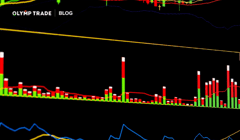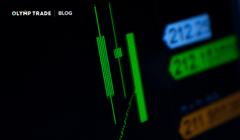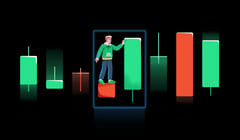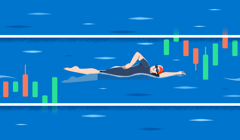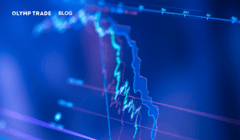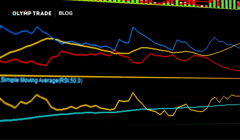
It’s no secret that we all make mistakes. The only question is the price we pay for them. When mistakes are made by large companies, the consequences are usually the most severe. Their share prices fall and investors lose money. If management does nothing to rectify the issue, it’s quite possible that the decline in the company’s share price will continue, which means that the very existence of the company may be called into question. That means tens, if not hundreds of thousands of jobs down the drain.
It is therefore vital for any large company to not only try to prevent mistakes, but also to correct them as quickly as possible. In this article, we take a look at three companies and talk about how they operated during their worst of times.
Contents:
- A disastrous year for Société Générale shares in 2008
- What happened to Apple shares in 2015?
- Merck’s stock collapse in amid the pandemic
- Conclusion
Interact with the underlined words and green dots to get additional details and explanations.
Additional context for the visuals.
Explanations and definitions of terms.
A disastrous year for Société Générale shares in 2008
Because of the financial crisis brought on by the subprime mortgage crisis in the US, 2008 was a difficult and challenging year for hundreds of companies. Companies in the financial sector were especially hard hit. Lehman Brothers went bankrupt and Merrill Lynch was acquired by Bank of America. Shares in major US banks Morgan Stanley and Goldman Sachs fell by more than 60%.
For details about the Merrill Lynch acquisition and rescue, read the book Crash of the Titans by Greg Farrell.

Alas, the crisis did not spare the shares of European financial institutions. The market capitalization of French bank Société Générale shrank by almost 61% in 2008. The situation was significantly complicated for the bank back in 2007, when the actions of its employee Jérôme Kerviel caused it to incur a loss of €4.9 billion.
Jérôme Kerviel worked as a trader at the bank, where he was involved in arbitrage operations. He quickly overstepped his level of authority and started directional trading. Kerviel’s first successful transaction took place in July 2005, when he made a profit of €500,000 on fluctuations in Allianz share prices.
The bank did not punish its employee in any way, and Kerviel quietly continued directional trading, eventually switching to futures on the German DAX index. In 2007, Kerviel opened short futures positions, betting on a recession. However, he suddenly changed his mind in early 2008 and believed that the subprime mortgage crisis would not affect the European economy. As a result, he opened opposite positions, betting that the economy would grow. When he finally took substantial losses and the bank launched an investigation, Kerviel admitted to management: “I wanted to surprise you. I used a martingale strategy to play short-term futures on the DAX using the market’s opening prices.”
As a result of Kerviel’s actions, the bank’s net profit for 2007 was just €947 million. However, at the end of 2008, the bank still managed to earn a net profit of €2 billion. After its deepest fall in the crisis of 2008, Société Générale’s share price began to rise and win back some losses in the second quarter of 2009. The bank’s market capitalization eventually rose by more than 200%.
What happened to Apple shares in 2015?
Quite often, problems within companies arise as a consequence not of one particular employee’s misconduct but of general teamwork. Incidentally, two important psychological errors are quite common here:
- Psychological subordination, where the decisions of people working in groups tend to converge until they are absolutely identical.
- Status quo bias, which is the tendency to stick to the same opinion despite a changed situation.
In 2014, Apple’s shares did well and the tech giant’s capitalization rose by almost 40%. The upward trend in shares continued. However, something went wrong in 2015.
In the first quarter of 2015, the company’s net profit was down to $13.5 billion, compared with the $18 billion earned earlier in Q4 2014. This is quite normal — the company traditionally earns more during the winter months as everyone hurries to buy their loved ones gifts for the holiday season, leading to a surge in demand for products. Thus, Apple shares were still rising in Q1 2015. However, net profits fell even lower in the second quarter, to $10.6 billion. The market was starting to tank. The stock was trading flat.
The most problematic quarter for the company was Q3 2015. In August, investors were spooked by the slight decline in the company’s sales and, most importantly, the company began to lose ground in China, which held a 25% share of Apple’s total sales at the time.
In September, Apple unveiled the Apple Pencil, TV, and iPhone 6S and 6S Plus. Alas, investors were left disappointed. Not everyone understood why they should buy the 6S model when there was already an iPhone 6, which cost less. As a result, despite the company’s good financial results for 2015, Apple stock fell significantly — down 22% from its highs in 2015. The stock’s upward price movement only resumed in the second half of 2016.

The company’s eventual price gain was due to both its improved financial position and the fact that Apple increased its dividend payout in 2015–2016, which of course also had an impact on the attractiveness of the company’s stock.
Merck’s stock collapse amid the pandemic
How did a major pharmaceutical company find itself playing catch-up during the COVID-19 surge? Merck is Germany’s oldest and largest pharmaceutical company, established in 1668. Merck’s capitalization is more than $220 billion. In comparison, the entire pharmaceutical sector in the United States was valued at $534 billion in 2020. Merck stock is traded on several exchanges, including the New York Stock Exchange.
Generally speaking, analyzing pharmaceutical stocks is difficult. The reason is that pharmaceutical companies produce a fairly complex product and often, for various reasons, that product does not make it to market. Therefore, when a drug for a particular disease is being researched, the market may be hopeful and the stock of such a company may rise. However, the risks are high. What if the product doesn’t pass the testing stage or accreditation process?
A most spectacular confrontation between different pharmaceutical companies came in 2020, at the height of the COVID-19 pandemic. The first quarter of 2020 was particularly difficult for the stock market: indices dropped significantly. Investors feared a number of companies would shut down due to quarantine measures and supply chain disruptions. Uncertainty was high, and the stocks of major European and US pharmaceutical companies were not spared its wrath. Some companies instantly jumped into the race to develop a vaccine against the virus. Almost all the big players took part: AstraZeneca, BioNTech,
Johnson & Johnson,
Moderna, Novavax and
Pfizer. All except Merck. So, what happened?
The reason was the doubts of Merck’s head Ken Friesen and research and development head Roger Perlmutter. Merck executives feared that developing a vaccine would take too much time and distract the company from other promising areas of business, particularly cancer research.
By the time the company realized the seriousness of the situation, it was too late. Merck’s competitors had already begun development in this area. Merck approached Oxford University for help, but was turned down. Eventually, the company began its own vaccine development, but by then, vaccines from Pfizer, Moderna and AstraZeneca were already in the final stages of testing. Roger Perlmutter solemnly retired.
This lag certainly took its toll on the company’s shares. The Merck stock price fell by more than 10% over 2020. At the same time, the average decline in shares of the entire US pharmaceutical sector in 2020 did not exceed 2%.

The company’s capitalization growth only resumed in 2022, as Merck managed to increase revenues and significantly improve net profit in 2021. Among other things, the company increased its dividend payout, which has attracted long-term investors.
Conclusion
It is simply not possible to avoid making mistakes. The main thing is to recognize them in time, correct them and draw conclusions. Merck, Apple and Société Générale have demonstrated their ability to learn from mistakes and ensure they don’t go out of business. Mistakes in the world of trading and investing are natural and should not be feared.
Equipping yourself with the right know-how and practicing on a demo account is the best way to avoid making mistakes and detecting potential ones before they even arise. This requires a mastery of your own trading psychology and, for the best results, a trading journal. Learn, trade and become a force to be reckoned with on the markets with Olymp Trade!
Go to Olymp TradeRisk warning: The contents of this article do not constitute investment advice, and you bear sole responsibility for your trading activity and/or trading results.
The 2008 Global Financial Crisis began with cheap credit and lax lending standards that fueled a housing bubble. When the bubble burst, the banks were left holding trillions of dollars of worthless investments in subprime mortgages. The recession that followed cost many their jobs, their savings and their homes.
The dollar value of a company’s outstanding shares. It is calculated as the current market price multiplied by the total number of outstanding shares.
The simultaneous purchase and sale of the same asset in different markets in order to profit from small differences in the asset’s listed price. It exploits short-lived variations in the price of identical or similar financial instruments in different markets or different forms.
Refers to strategies based on the investor’s view of the future course of something — either the overall financial market or a particular asset.
A legal agreement to buy or sell a particular commodity asset or security at a predetermined price and at a specified time in the future.
Also called a short position, a short is created when a trader sells an asset with the intention of repurchasing it or covering it later at a lower price.
A system of investing in which the dollar value of investments continually increases after losses, or the position size increases with the lowering portfolio size. The Martingale system was introduced by French mathematician Paul Pierre Lévy in the 18th century.


